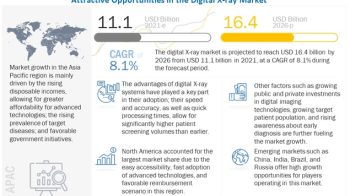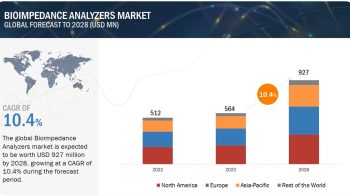Impact of COVID19:
The COVID-19 pandemic has emerged as a huge challenge for the global fertility market. In the initial stages of the pandemic, authorities recommended the suspension of all in-person fertility treatments.
For instance, in March 2020, the American Society of Reproductive Medicine and the Canadian Fertility and Andrology Society announced their recommendations to instantly and for the foreseeable future suspend all in-person fertility treatments in the US and Canada due to COVID-19.
One in six reproductive-aged couples experiences infertility, and many turn to treatments such as IUI and IVF, which require several in-person appointments to complete. Around 3 million people seek infertility treatment in India every year, but only 0.5 million people undergo IVF/Intrauterine Insemination (IUI) procedure.
Download PDF Brochure@
https://www.marketsandmarkets.com/pdfdownloadNew.asp?id=139945432
As per data, of the 1,100 centers across India, an ~90% drop was observed in the number of people undergoing IVF cycles between April and June 2020. This data is indicative of the cancellation of IVF cycles among several couples. Due to this situation, people have turned to alternative testing and planning methods like fertility monitors and ovulation prediction kits. The wide availability of fertility testing devices, ovulation devices, and fertility monitors on e-commerce websites has increased the consumption of these devices among people monitoring their reproductive health during the pandemic.
The impact of COVID-19 on the male fertility market can be considered to be positive. The SARS-CoV-2 main complementary protein and mediator for SARS-CoV-2 have been identified to be the angiotensin-converting enzyme 2 (ACE2) that exists in various organs and is highly expressed within the testicular tissue (spermatogonia, Leydig, and Sertoli cells). According to the WHO, the male reproductive system should be considered a vulnerable route of COVID-19 infection and declared a high-risk organ.
ROS accumulation, complex protein formation, and renin system failure could also progress to intercellular edema, which could lead to intratesticular obstruction with consequences such as sperm count reduction and elevated Sperm DNA Fragmentation Index (SDFI). Testicular ultrasonography, semen analysis, and male hormone profiling are recommended after a person has been affected by COVID-19. Owing to this, the male fertility market showcased an upsurge in demand for testing products and thus gained market share during the pandemic.
Opportunity: Emerging nations to offer new growth avenues
Emerging markets such as China, India, Brazil, and Mexico are expected to offer significant growth opportunities to players operating in the fertility test market. The demand for fertility and ovulation monitors in emerging countries is expected to grow significantly in the coming years due to the rising infertility rates, increasing prevalence of PCOS and obesity, growing fertility education, and easy availability of fertility monitors through e-commerce websites, pharmacies, and retail shops/drugstores. In addition, friendly regulatory policies and less competition among players in developing markets (as compared to developed markets) have encouraged companies to focus on emerging countries.
Challenge: High cost of fertility testing monitors
Price and brand recognition are two important criteria for the adoption of fertility testing kits and monitors across the globe. Being elective and non-reimbursable in nature, the price of a device is a prime determinant for its use. Although advanced branded fertility monitors possess high accuracy in identifying the fertility window, they are priced at a premium due to the high costs involved in maintaining brand loyalty, obtaining regulatory approvals, and incorporating the software in the systems. Owing to the high cost of these fertility monitors, a very limited number of patients in developing countries can afford them. This, in turn, is limiting the acceptance of these products, mainly in developing countries.
Request Sample Pages@
https://www.marketsandmarkets.com/requestsampleNew.asp?id=139945432
North America dominated the global fertilty test market in 2020
North America, comprising the US and Canada, accounted for the largest share of the fertility test market in 2020. The large share of this region can primarily be attributed to factors such as high prevalence of infertility, increasing awareness about fertility testing among women, the rising age of first-time pregnancies in women, and the easy availability of ovulation and fertility monitors through e-commerce websites.


